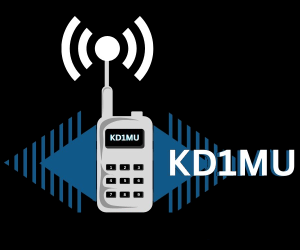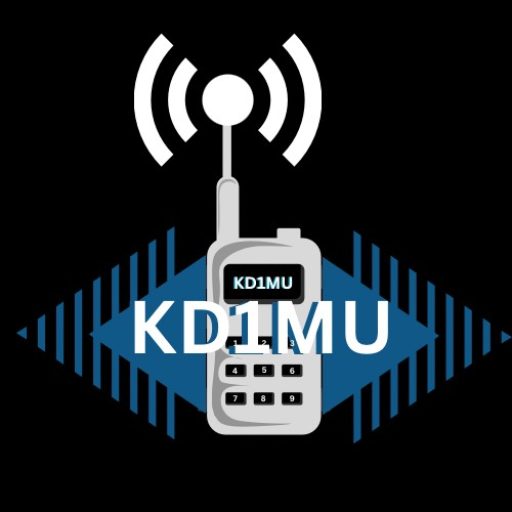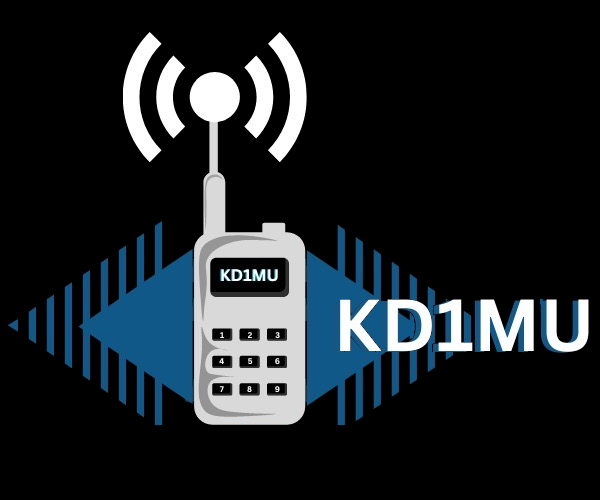- info@lebovitz.net

KD1MU RADIO
Menu

Menu

Menu
Amateur Radio
Amateur Radio, often called ham radio, is a popular hobby and service that involves the use of designated radio frequencies for non-commercial communication and experimentation. Licensed amateurs (called ham operators) use radios to communicate with others around the world, participate in public service activities, and explore a variety of technical aspects of radio communication. Here’s an overview of what amateur radio is and why people enjoy it:What is Amateur Radio?
Amateur radio involves the use of specific frequency bands allocated by governments for private, non-commercial use by licensed individuals. Ham radio operators use various types of equipment, from handheld radios to home-built antennas and digital software, to communicate locally or over long distances.
- Communication Types:
- Voice (Phone): Using traditional voice modes like AM, FM, or SSB (Single Sideband) to talk to other hams.
- Morse Code (CW): Some operators use Morse code, an efficient and minimalist mode of communication.
- Digital Modes: Operators can use computers and radios together to send digital signals, such as PSK31, FT8, or RTTY.
- Satellite Communication: Hams can use amateur radio satellites to communicate with others across continents.
- Emergency Communication: Amateur radio is often used during natural disasters when regular communication systems fail, providing emergency assistance.
- International Reach: Amateur radio allows people to communicate with others from different countries, regardless of internet or phone lines. With the right equipment and conditions, ham operators can talk with people on the other side of the world.
- Community: Hams often form local clubs and participate in global events like contests or Field Day, creating strong social bonds. Operators get to meet like-minded individuals who share their passion for technology and communication.
- Hands-On Learning: Amateur radio is a platform for exploring radio electronics, physics, and communication technology. Hams build their own equipment, experiment with antennas, and use radios to explore new digital modes.
- Technical Challenges: Many are drawn to the challenge of understanding how radio waves propagate, especially over long distances. Operators enjoy experimenting with different bands, antenna designs, and modes to improve their performance.
- DIY Spirit: The ability to build, repair, and customize equipment attracts people who like working with their hands and minds. Hams often build their own radios, antennas, and communication systems.
- Disaster Response: Amateur radio is invaluable in emergencies, especially when cell networks, power grids, or the internet fail. Ham operators can provide reliable communication during natural disasters like hurricanes, wildfires, and earthquakes. Groups like ARES (Amateur Radio Emergency Service) and RACES (Radio Amateur Civil Emergency Service) are examples of hams working with local authorities in times of crisis.
- Self-Sufficiency: Many operators enjoy the idea of being able to communicate even in the absence of modern infrastructure. For preppers or survivalists, ham radio is a tool for independence.
- Competitions: Hams enjoy participating in contests, which challenge operators to make as many contacts as possible within a certain time frame, often across different countries or continents.
- Awards: Many operators aim for DXing, trying to contact as many different countries (DX entities) as possible. They also work towards achieving awards like Worked All States (WAS) or DX Century Club (DXCC).
- Amateur Satellites: Hams have access to amateur satellites (also known as OSCARs, Orbital Satellites Carrying Amateur Radio) and can communicate through them or even attempt to receive signals from deep space probes.
- International Space Station (ISS): Amateur radio allows people to communicate with astronauts aboard the ISS. Ham radio is used for educational outreach by the crew and as a hobby by astronauts.
- Personal Achievement: Many enjoy the satisfaction of learning a new skill and applying it. Passing the tests for amateur radio licenses, building radios or antennas, and making long-distance contacts can be deeply rewarding.
- Exploration: Radio amateurs enjoy exploring how radio waves interact with the Earth’s atmosphere, experimenting with different bands (especially during solar cycles) to see how far their signal can reach.
- Fun and Hobbies: It’s simply a fun hobby for people who enjoy tinkering with technology, exploring the natural world of radio frequencies, and being part of a global community.
- Supporting Local Events: Ham operators often assist in organizing communication for public events like marathons, parades, and festivals, providing a reliable and independent communication network for event safety and logistics.
- Volunteering for Emergency Services: Many hams join organizations like ARES (Amateur Radio Emergency Service) and RACES (Radio Amateur Civil Emergency Service), where they train and prepare to support public safety and government agencies during crises.
- Building Friendships: Amateur radio offers a social network of like-minded individuals who share an interest in communication and technology. Operators can form strong bonds with others locally, nationally, and globally through shared activities like contests and radio nets.
- Participation in Global Events: Many hams participate in international contests, Field Day exercises, and global “nets” (scheduled on-air gatherings), giving them a chance to connect with operators worldwide.
- Off-Grid Communication: Ham radio can function in off-grid or remote situations, making it ideal for preppers, survivalists, and outdoor enthusiasts who need communication independent of commercial systems.
- Portable and Mobile Operation: Many hams set up portable stations for use during travel, camping, or even on boats, allowing communication in isolated areas without needing a phone signal.
- Enjoyable Hobby: Many people simply enjoy the fun of making contacts with others around the world, working to improve their stations, and participating in contests or local radio clubs. The variety in operating modes (voice, digital, CW) and bands makes it a versatile and fulfilling pastime.
- Endless Exploration: With so many modes, frequencies, and technologies to explore, amateur radio is a hobby that continually offers new challenges and learning opportunities.
- Career Development: Many hams develop technical skills that are directly transferable to careers in engineering, telecommunications, IT, and electronics. Radio enthusiasts often become professionals in fields like broadcasting, network engineering, or even space communications.
Menu

Services
Menu
Get In Touch
57 Babcock St
Brookline, MA 02446
- support@kd1mu-radio.com
- Phone +1 617-651-4221
- Instagram kd1mu.radio
50 Years of experience with Radio. We can help you find the best product to meet your needs, help you set it up, and get the most out of it.
KD1MU RADIO
Powered by Omax John
